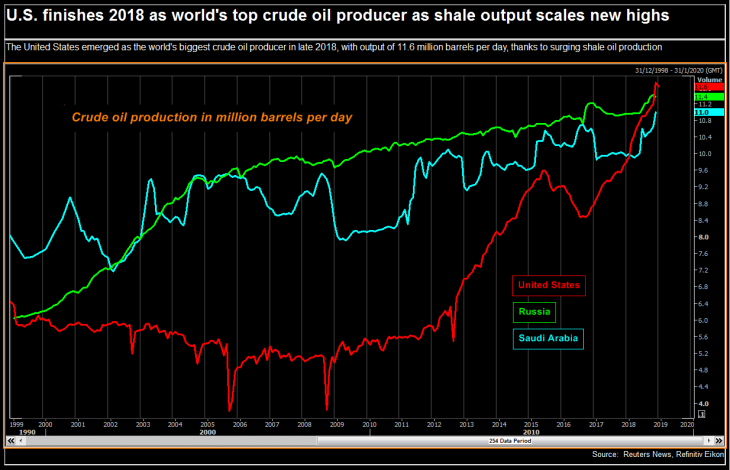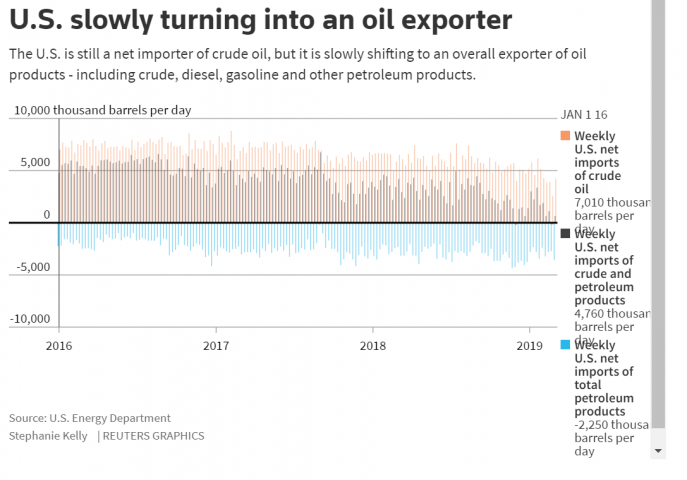Fed’s balance sheet plan, economic outlook under microscope
WASHINGTON (Reuters) – The U.S. Federal Reserve on Wednesday is expected to hold interest rates steady, shave the number of hikes projected for the rest of the year, and release long-awaited details of a plan to end the monthly reduction of its massive balance sheet.
The U.S. central bank since early this year has signaled a “patient” approach to increasing borrowing costs, drawing an end to a gradual, three-year cycle of monetary tightening marked by nine rate hikes, including seven during the 2017-2018 period.
Investors now put a 75 percent probability on the likelihood the Fed won’t raise its overnight benchmark interest rate, or federal funds rate, any more this year, according to CME Group’s FedWatch tool. The fed funds rate is currently set in a range of 2.25 percent to 2.50 percent.
New quarterly economic and rate projections to be released with the latest Fed policy statement at 2 p.m. EDT (1800 GMT) will show how closely policymakers align with that view. The Fed’s December projection called for two hikes this year, but that is widely expected to be cut to a single increase at the conclusion of the two-day policy meeting on Wednesday.
It would take a downward move by seven policymakers to bring the median expected number of hikes to zero for the year, a full half-percentage-point change that has happened only once since the Fed began making its “dot plot” of projections public in 2012.
The more intense focus among investors may be on the balance sheet, and the Fed’s plans to stop reducing its holdings of Treasury bonds and mortgage-backed securities each month by as much as $50 billion.
Details of that plan are also expected to be released on Wednesday, providing investors with a sense of how much longer the drawdown will continue, and what will likely be left in the Fed’s portfolio of assets when it stops.
Minutes of the Fed’s policy meeting in late January showed officials wanted “to announce before too long a plan to stop reducing … asset holdings later this year,” a statement many have construed to mean an endgame for the balance sheet would be revealed this week.
Fed Chairman Jerome Powell is due to hold a press conference half an hour after the release of the policy statement.
STEADY REDUCTION
Fed officials have generally pointed to the rundown ending sooner rather than later, with perhaps just a few more months to go before the central bank hits a level where it is comfortable stopping.
“Assuming the shrinking process stops in October … the balance sheet should end up in the $3.75 trillion region,” Cornerstone Macro analyst Roberto Perli wrote in a preview of this week’s Fed meeting.
That is more than triple the size of the Fed’s holdings before it began three rounds of quantitative easing in which it purchased trillions of dollars of Treasuries and mortgage-backed securities in response to the 2007-2009 economic crisis and recession.
Having built up its balance sheet during the crisis and its aftermath, the Fed began to “normalize” its holdings in October 2017 with a steady reduction of up to $50 billion per month.
Having studied the reaction of financial markets to the reductions, as well as the use of reserves held by financial institutions at the Fed, the central bank concluded the most effective way of managing interest rates moving forward was to keep the supply of reserves “ample,” and pay interest on any excess kept at the Fed beyond the statutory minimums required, for example, to meet customer withdrawal demands.
With banks now demanding more reserves for a variety of uses, coupled with growth in the amount of cash in circulation and other items, the Fed feels it is close to an appropriate size for its balance sheet.
The preferred final mix of assets and how to reach it is still being debated.



